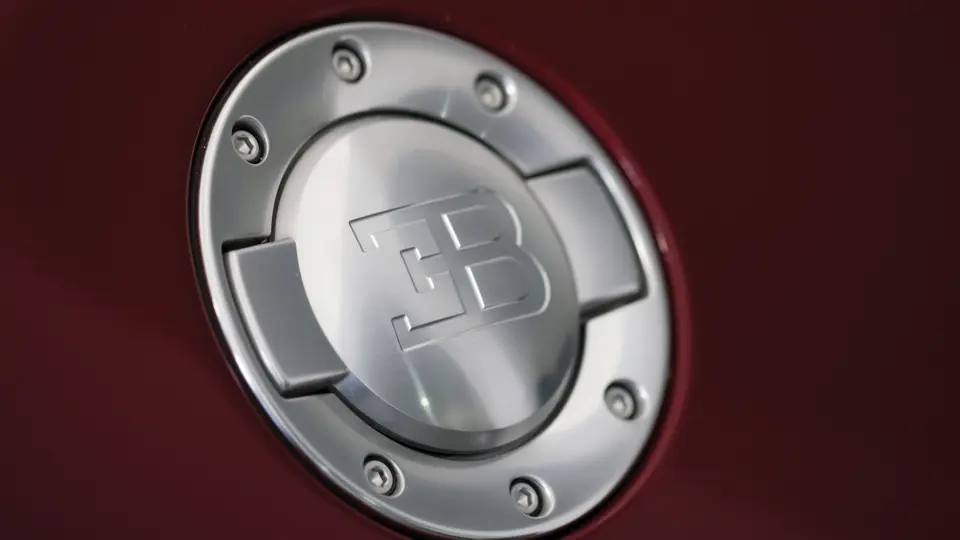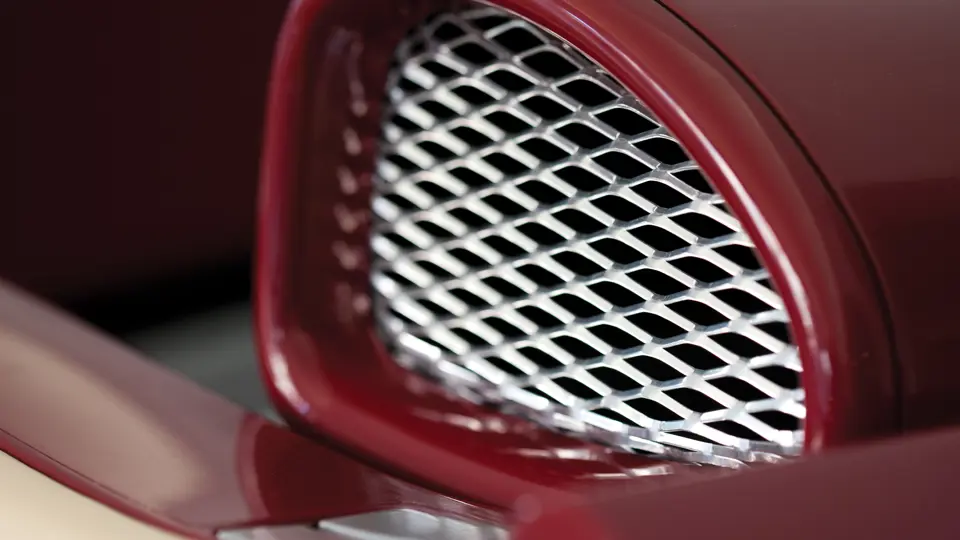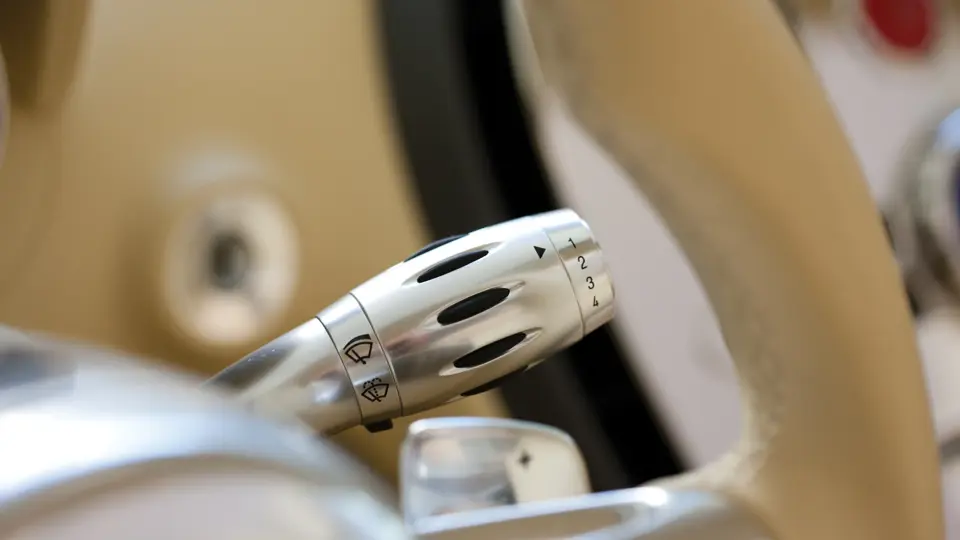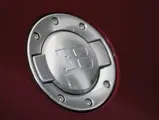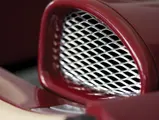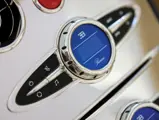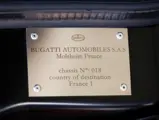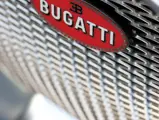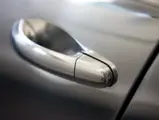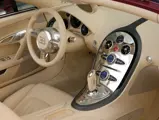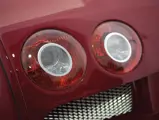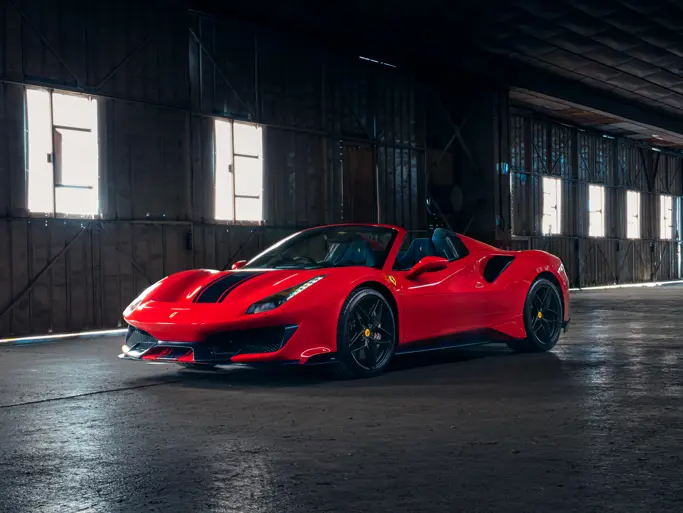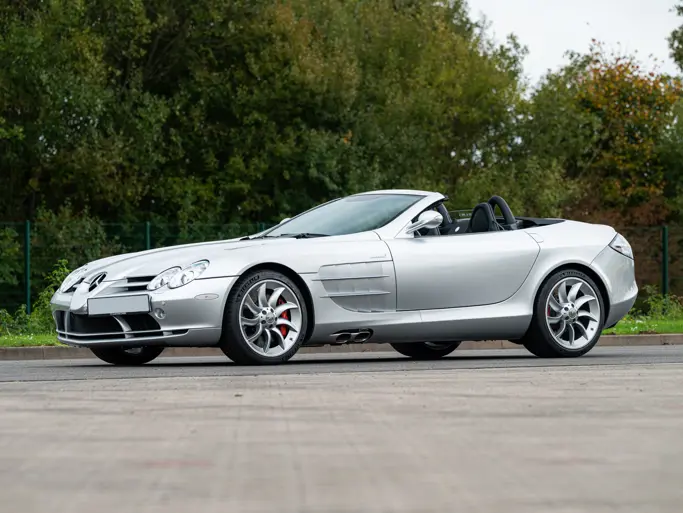
2010 Bugatti Veyron 16.4 Grand Sport
{{lr.item.text}}
€975,000 - €1,100,000 EUR | Not Sold
{{bidding.lot.reserveStatusFormatted}}
- A technological tour de force
- The first Veyron 16.4 Grand Sport delivered to France
- Features a “669” motif, amongst other special options
- Under 1,300 kilometres since new
- Tour de force technologique
- Première Veyron 16.4 Grand Sport livrée en France
- Porte un motif « 669 » entre autres options spéciales
- Moins de 1 300 km depuis l’origine
1,001 hp, 7,993 cc quad turbocharged and intercooled DOHC 64-valve W-16 engine, seven-speed dual-clutch semi-automatic sequential transmission, front and rear double-wishbone suspension, and four-wheel carbon ceramic disc brakes with rear airbrake. Wheelbase: 2,700 mm
Moteur W-16 à 2 ACT par banc, 7 993 cm3, 1 001 ch, 64 soupapes, quatre turbocompresseurs et échangeurs, boîte de vitesse semi-automatique à 7 rapports à double embrayage, suspension avant et arrière à triangles superposés, quatre freins à disque carbone céramique et frein aérodynamique arrière. Empattement: 2 700 mm.
No vehicle of the 21st century has created such a stir as the Bugatti Veyron, because no vehicle in the 21st century has produced performance figures like the Bugatti Veyron. Like the Ferrari Testarossa and Lamborghini Countach, this car would become a fixture on many a child’s bedroom wall, inspiring future generations of automotive enthusiasts and speed freaks. Nearly six years would pass as the Veyron went from concept to production, and there must have been tears in the eyes of those who worked on the car when the production version finally appeared at the Tokyo Motor Show in October 2005, for they had achieved what many thought to be impossible.
The Veyron was the brainchild of Ferdinand Piëch, the chairman of the Volkswagen Group and a former engineer who worked on many automotive greats, such as the Porsche 917 and the Audi Quattro. Piëch directed Volkswagen to purchase the Bugatti name in 1998, and he instructed his engineers to design a car that could reach a top speed of 400 km/h with an output of over 1,000 horsepower; this was a request that many thought was utterly ludicrous. Such requests were typical of Piëch, who pressured engineers into producing the 2002 Volkswagen Phaeton, which Piëch insisted must be able to sustain being driven all day at 300 km/h at 50 degrees Celsius whilst still maintaining an interior temperature of 22.2 degrees Celsius.
During development of the Veyron two years later, the primary question plaguing the engineers was how can they create a powerplant capable of getting a road legal automobile to 250 mph? Their solution was to bolt two W-8 engines together, to create a W-16 configuration, and then add four turbochargers. In a documentary about the Veyron’s development and construction by National Geographic, an engineer recalled the first time the Veyron’s engine was run at full throttle at Volkswagen’s Salzgitter, Germany, facility in 2001. The engine produced so much heat that it completely overwhelmed the building’s exhaust system on the roof, which almost went up in flames as a result. Months would be spent engineering the cooling and exhaust systems on the Veyron. Further development was riddled with similar setbacks, and since no car had ever reached such speeds, no one knew how the components would react under such pressure. Like the early days of the space program, these engineers were truly in uncharted territory.
Fine attention to detail is necessary to build a supercar capable of such speeds, and as a result, almost every part on the Veyron has been hand built. Hundreds of hours are spent handcrafting such parts as the car’s 10 radiators, its carbon-ceramic brake discs, and even the tyres, which have been produced especially for the Veyron by Michelin. Bugatti employs just eight specialists to build the massive 16-cylinder engines by hand, and this is a job that takes one week from start to finish. Even though 1,001 horsepower is stated by Bugatti as the standard output of the cars, most cars can produce between 1,030 and 1,060 horsepower in optimum conditions; 1,001 was merely the lowest amount of horsepower the cars would produce in unfavourable conditions.
Unknown to most, the Veyron can decelerate faster than it can accelerate, achieving a 100–0 km/h time of 2.2 seconds, compared to a 0–100 km/h time of 2.5 seconds. This is no doubt thanks to its rear air brake and spoiler, which provide almost a third of the Veyron’s total braking power. At its top speed, the Veyron will grind to a halt in less than 10 seconds, if the owner so desires. The Veyron finally reached its ultimate goal when it smashed Andy Wallace’s top speed record in the McLaren F1 by reaching a Guinness World Record-approved top speed of 253.19 mph at Ehra-Lessien, Volkswagen’s top-secret test facility in Germany.
Next, Bugatti’s engineers developed a convertible version, which premiered at the Pebble Beach Concours d’Elegance in 2008, three years after the Veyron entered production. It was dubbed the Grand Sport, and a total of 150 examples would be made, making it approximately twice as rare as its closed sibling. The chassis was reinforced to compensate for the loss of the roof, and it was fitted with a marginally taller windshield and a modified rear bulkhead, helping to fit the removable top. The Grand Sport models were also updated with a new integrated rearview camera that was embedded in the rearview mirror, daytime running lights, an upgraded sound system, and new wheels, which were features that would find their way into future Veyron coupés. Whilst the Grand Sport retains the same top speed as the original Veyron, it is electronically limited to 220 mph with the roof off, which is more than fast enough to give one’s hair a complete restyling.
According to its chassis plate, not only is this the 18th Grand Sport built, it is also the very first example delivered to its native country of France. This Veyron is finished in a two-tone colour combination of Rosso Italiano and polished aluminium, which is a very striking colour scheme. The interior, trimmed in magnolia leather and polished aluminium, feels inviting and warm, and even more so when the hardtop is removed. Both the interior and exterior are inscribed with a “669” motif that was specified by the first owner, an individual residing in Paris.
In terms of automotive history, the Bugatti Veyron is a landmark achievement of engineering, and it has certainly set the bar for which all other 21st century supercars will be judged. This Grand Sport is truly in spectacular condition, with less than 1,300 kilometres on its odometer, and it has never left the country it was born in, which is the same country where it is offered today.
Aucun véhicule du XXIè siècle n’a suscité autant de réactions que la Bugatti Veyron parce qu’aucun véhicule du XXIe siècle n’a réalisé des performances comme celles de la Bugatti Veyron. Comme la Ferrari Testarossa et la Lamborghini Countach, cette voiture affichée sur les murs des chambres d’ado inspirera des générations de passionnés d’automobiles et d’amateurs de vitesse. Près de six ans se sont écoulés pour que la Veyron passe de l’état de concept à celui de modèle de production et ceux qui avaient travaillé sur le projet ont dû ressentir une certaine émotion quand la voiture a fait son apparition au salon de Tokyo d’octobre 2005 car ils surent alors qu’ils avaient réalisé ce que beaucoup croyaient impossible.
La Veyron naquit du cerveau de Ferdinand Piëch, président du Groupe Volkswagen et ancien ingénieur qui avait travaillé sur de nombreux chefs-d’œuvre automobiles comme la Porsche 917 et l’Audi Quattro. Piëch poussa Volkswagen a racheter le nom de Bugatti en 1998 et chargea ses ingénieurs de l’étude d’une voiture capable d’atteindre 400 km/h avec une puissance de plus de
1 000 ch, exigence que d’aucuns estimèrent totalement absurde. Ce genre de requête était typique d’un Piëch capable de mettre la pression sur ses ingénieurs afin de produire la Volkswagen Phaeton 2002 qui, insista Piëch, devait pouvoir rouler toute une journée à 300 km/h par une température de +50°C tout en conservant une température intérieure de 22°C.
Le développement de la Veyron pendant deux ans entraînà la lancinante question de base posée aux ingénieurs : comment créer un moteur capable de propulser une voiture homologuée pour la route à 400 km/h ? Leur solution ? Réunir deux moteurs W-8 afin de créer un bloc W16 puis ajouter quatre turbocompresseurs. Dans un reportage sur le développement et la construction de la Veyron publié par le National Geographic, un ingénieur se rappela la première fois que le moteur de la Veyron fut essayé pleins gaz à l’usine de Salzgitter de Volkswagen en Allemagne en 2001. Le moteur dégagea tellement de chaleur qu’il ravagea totalement le système d’échappement sur le toit du bâtiment qui faillit brûler complètement. Il fallut des mois pour concevoir les systèmes d’échappement et de refroidissement de la Veyron. La mise au point fut retardée par bien d’autres problèmes, aucune voiture n’ayant atteint des vitesses pareilles et personne ne sachant comment les composants allaient se comporter sous de telles contraintes. Comme au début de la conquête spatiale, les ingénieurs s’aventuraient en terre inconnue.
Un très grand souci des détails est indispensable pour fabriquer une supercar capable de telles vitesses, ce qui fait que presque toutes les pièces de la Veyron sont faites à la main. Des centaines d’heures sont consacrées à la fabrication artisanale de composants comme les dix radiateurs de la voiture, les disques de frein en carbone céramique et même les pneus spécialement fabriqués pour la Veyron par Michelin. Bugatti n’emploie que huit spécialistes pour assembler les massifs moteurs seize cylindres à la main, tâche qui demande une semaine. Et si une puissance de 1 001 ch est revendiquée par Bugatti comme valeur nominale, la plupart des voitures disposent de 1 030 à 1 060 ch en conditions optimales – 1 001 étant probablement le minimum dont la voiture est capable dans les conditions les moins favorables.
Ce que l’on sait moins, c’est que la Veyron peut décélérer plus vite qu’elle n’accélère, passant de 100 à 0 km/h en 2,2 secondes alors qu’elle accélère de 0 à 100 km/h en 2,5 km/h. Cela ne fait aucun doute grâce à son spoiler et frein aérodynamique qui fournit près d’un tiers de la puissance de freinage totale de la Veyron. À sa vitesse maximale, la Veyron peut s’arrêter en moins de 10 secondes si son conducteur l’exige. La Veyron réalisa finalement son but ultime en battant le record de vitesse d’Andy Wallace sur la McLaren F1 en atteignant la vitesse maximale - notée au Livre Guinness des records - de 405,3 km/h à Ehra-Lessien, l’installation d’essais secrète de Volkswagen en Allemagne.
Les ingénieurs de Bugatti en développèrent ensuite une version décapotable révélée en première mondiale au Concours d’Elégance de Pebble Beach en 2008, trois ans après l’entrée de la Veyron en production. Appelée Grand Sport, 150 exemplaires au total seraient produits qui rendraient ainsi la Grand Sport deux fois plus rare que son homologue fermée. Le châssis fut renforcé afin de compenser la perte du toit et équipé d’un pare-brise légèrement plus grand et d’un tablier arrière modifié afin de faciliter le montage du toit amovible. Les modèles Grand Sport furent aussi modernisés en recevant une nouvelle caméra arrière intégrée au rétroviseur, des éclairages de conduite jour et un système audio amélioré ainsi que de nouvelles roues, des spécifications qui réapparaîtront dans les coupés Veyron ultérieurs. Si la Grand Sport conserve une vitesse de pointe identique à celle de la Veyron initiale, cette vitesse est électroniquement limitée à 350 km/h toit enlevé : suffisamment vite pour sculpter la plus rebelle des coiffures.
Selon la plaque châssis, cette voiture est non seulement la 18e Grand Sport construite, mais elle est aussi le tout premier exemplaire livré en France, son pays natal. Cette Veyron est traitée en deux tons, Rosso Italiano et aluminium poli, une combinaison très spectaculaire. L’intérieur garni en cuir magnolia et en aluminium poli est chaud et accueillant et d’autant plus quand le toit est déposé. L’intérieur et l’extérieur sont ornés du motif « 669 », détail spécifié par le premier propriétaire qui résidait à Paris.
Du point de vue de l’histoire de l’automobile, la Bugatti Veyron est une réussite marquante de la technologie qui a fixé un niveau de référence d’après lequel seront jugées toutes les supercars du XXIe siècle. Cette Grand Sport véritablement dans un état exceptionnel avec moins de 1 300 km au compteur n’a jamais quitté le pays qui l’a vu naître, celui-là même où elle est aujourd’hui proposée à la vente.


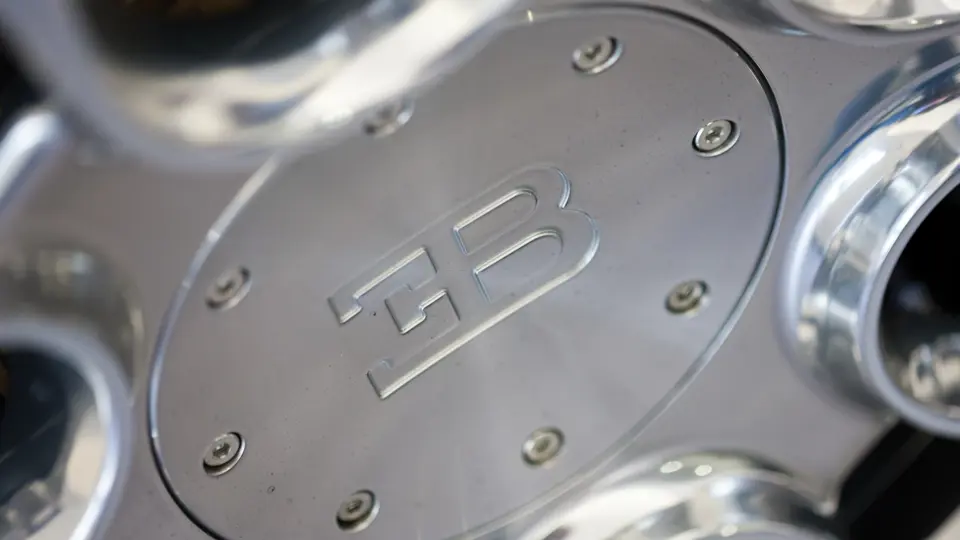

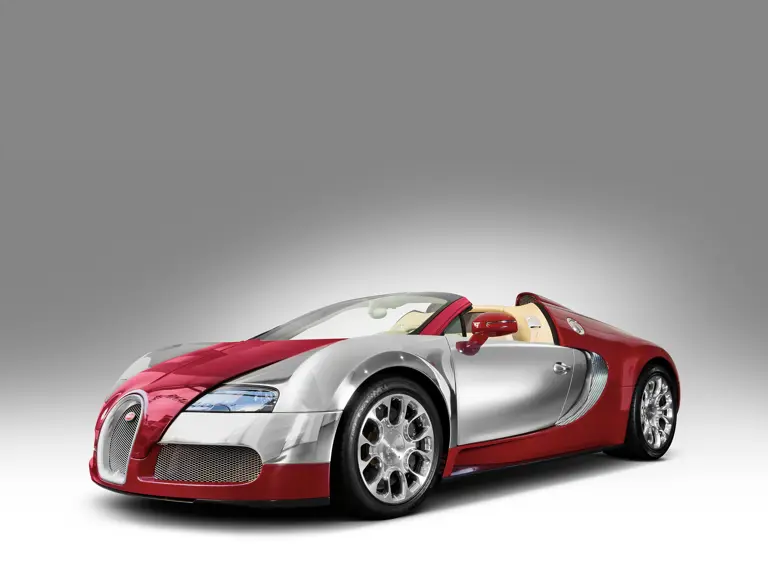
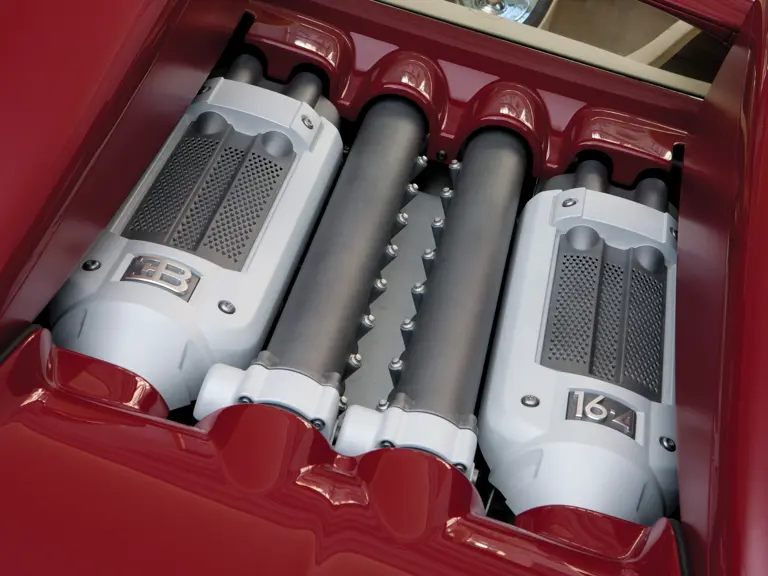

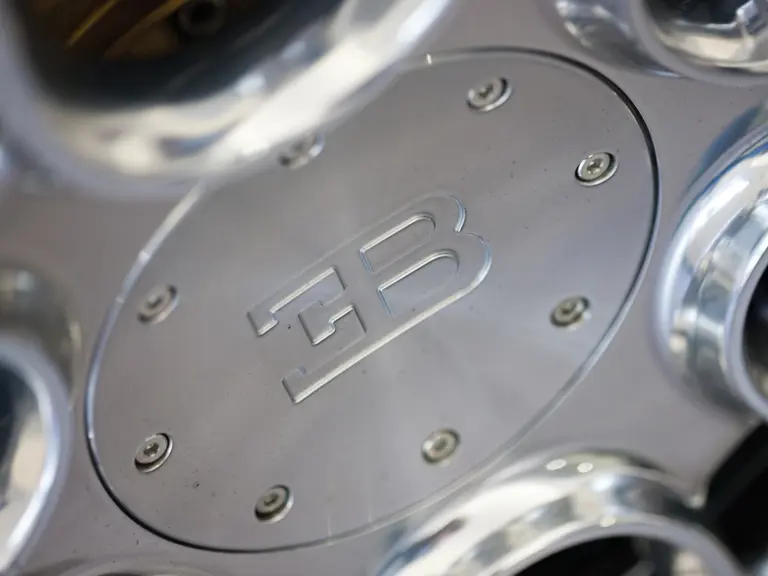
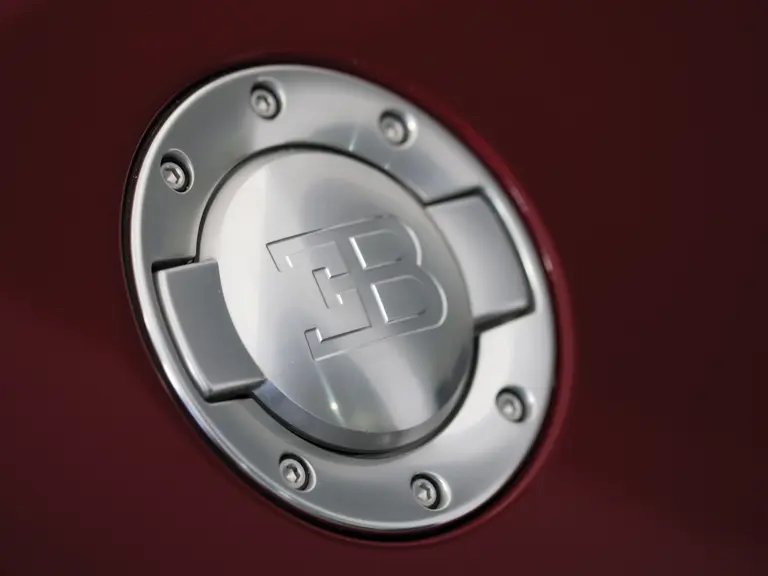
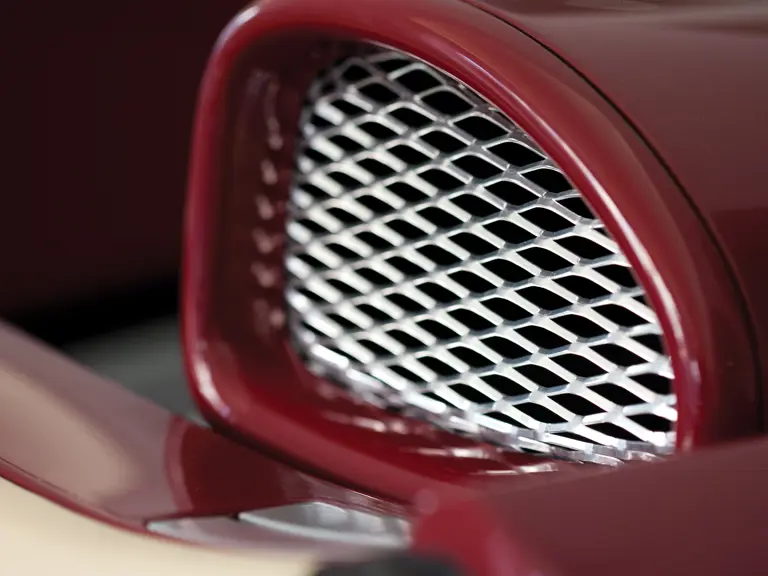
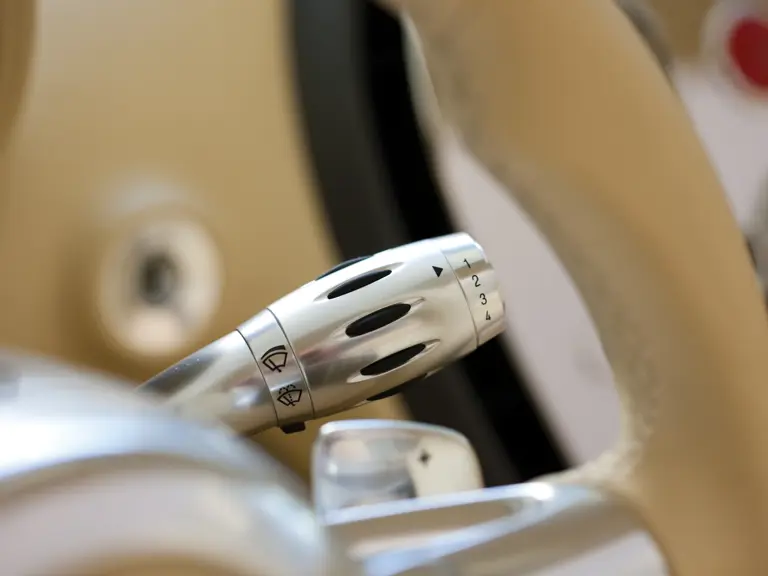

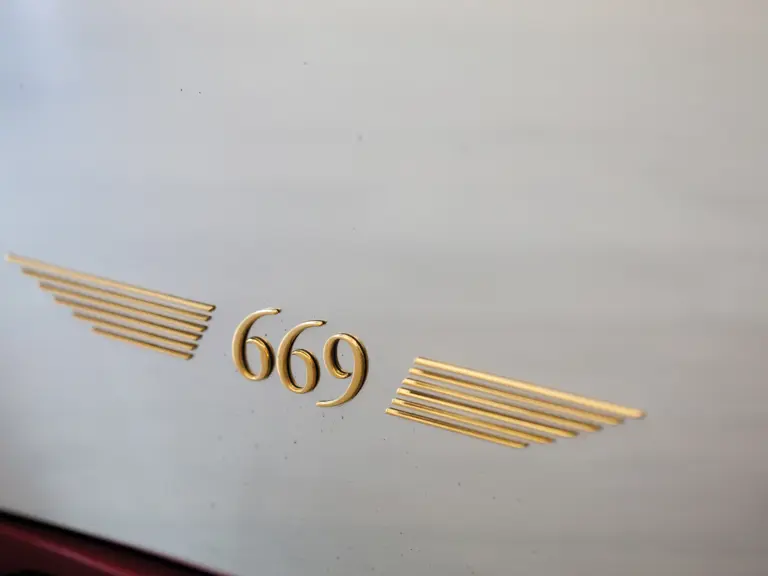

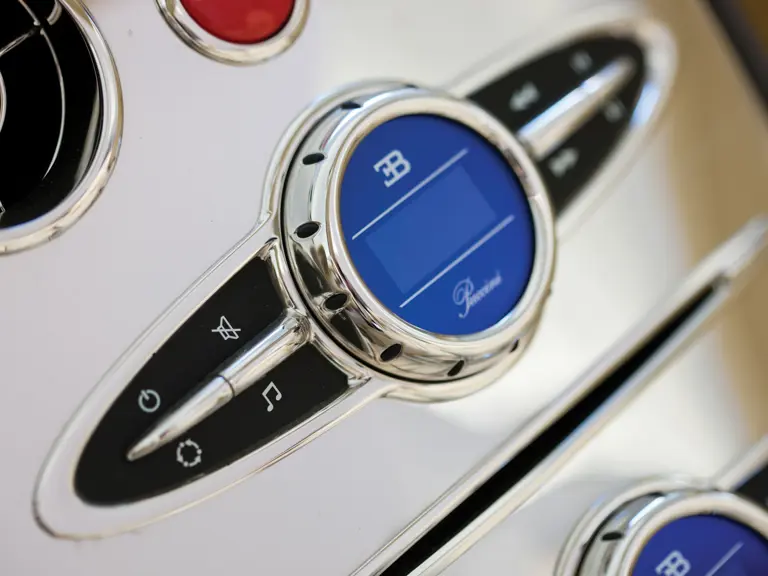
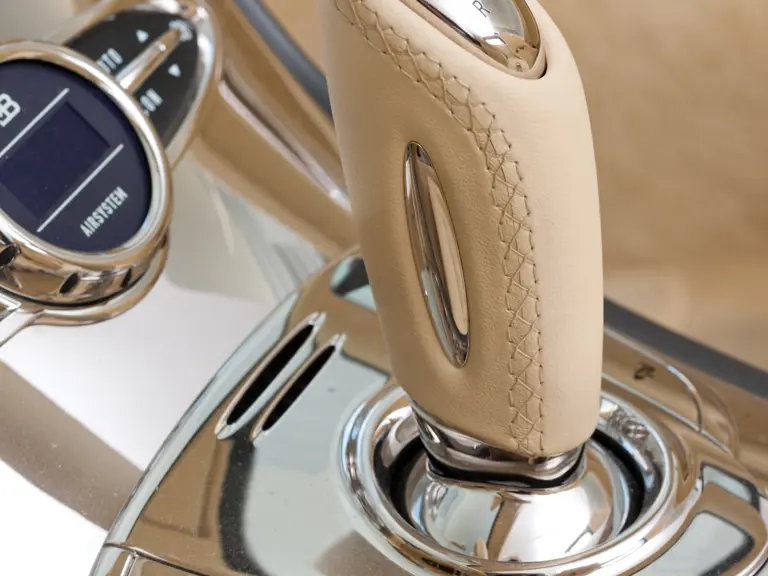
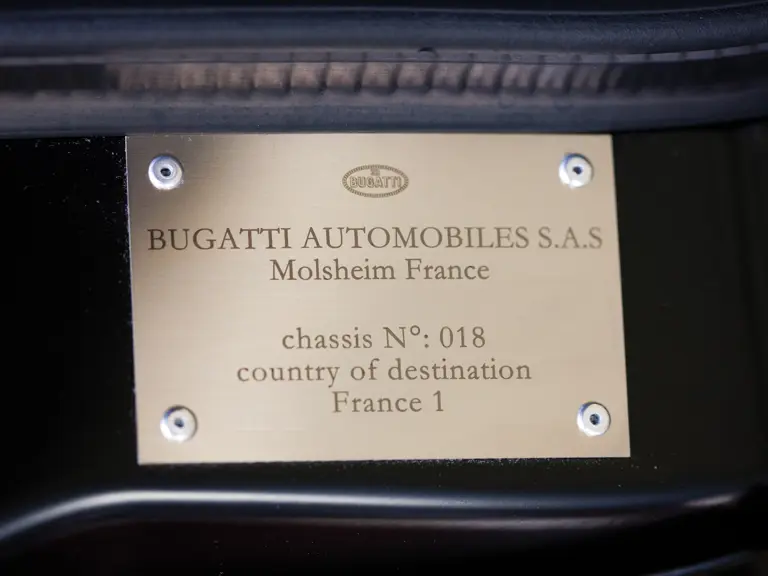
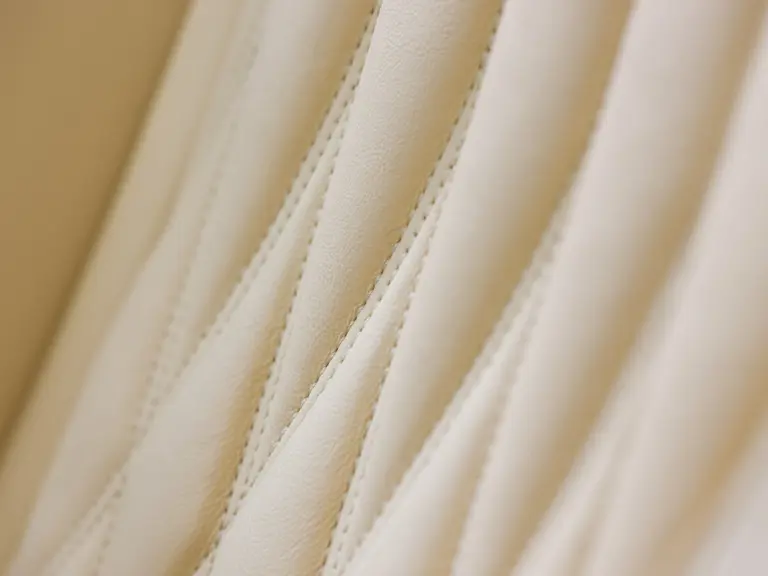
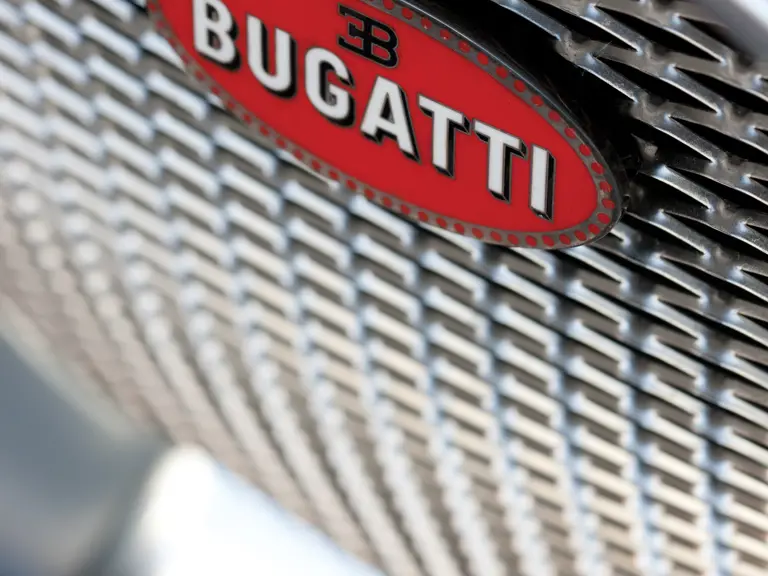
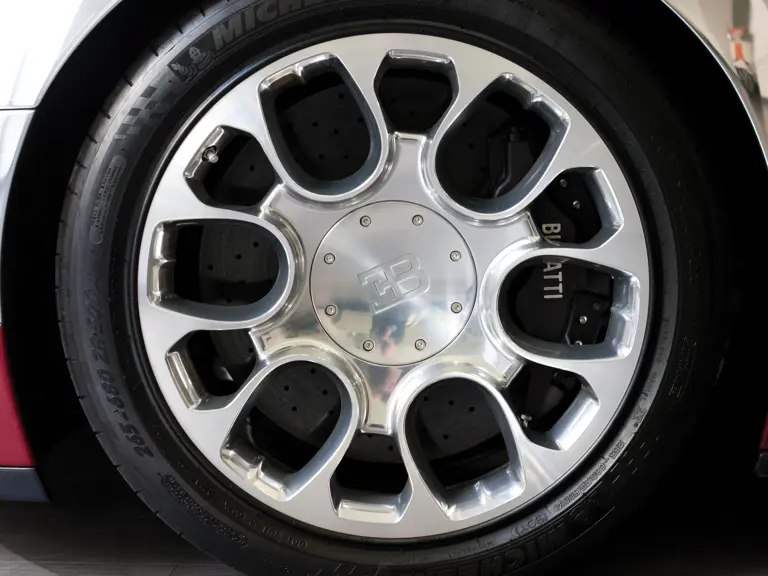

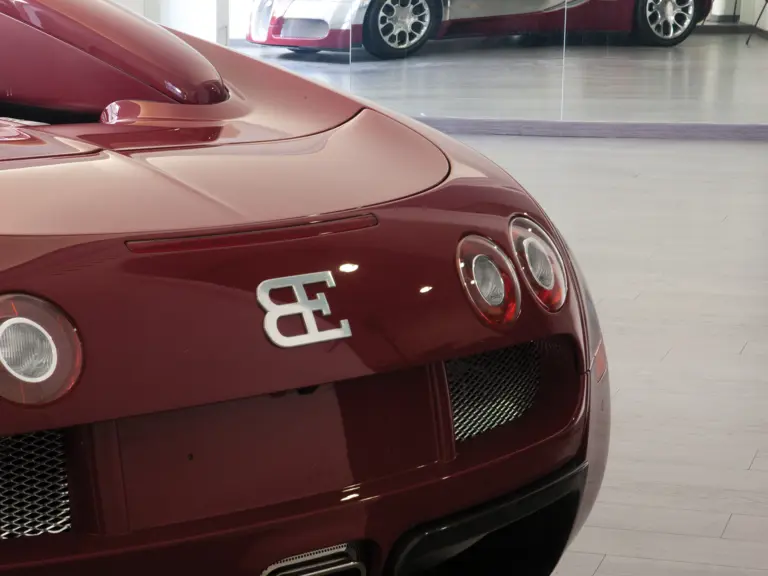
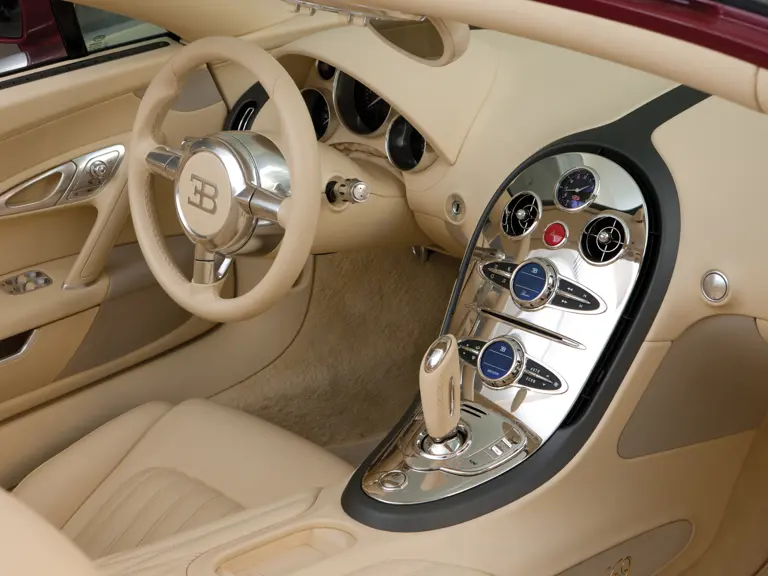
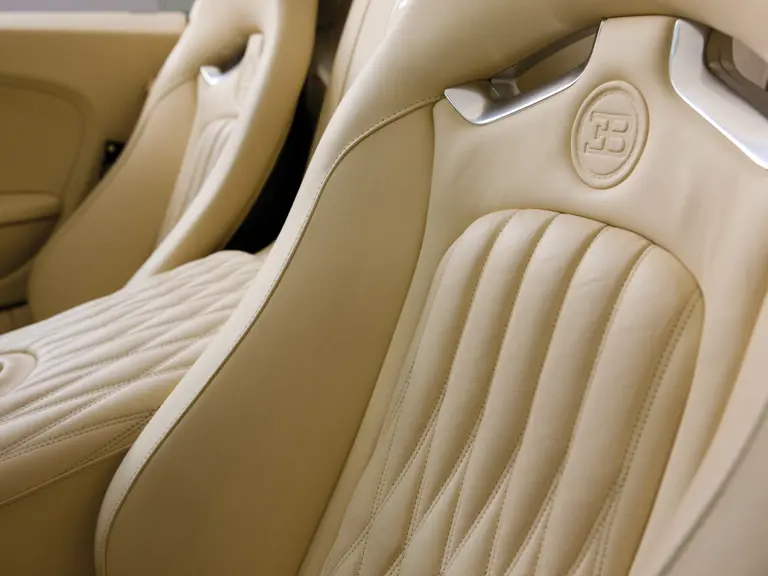
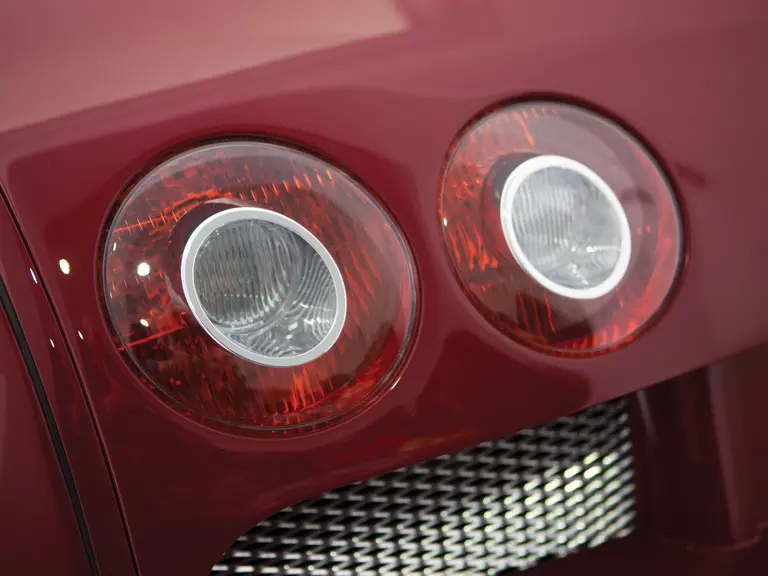
 | Paris, France
| Paris, France
